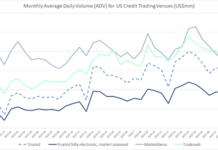Led by global co-chair Digital Assets & Technology Committee, Vince Turcotte, 35 participants from the APAC digital assets ecosystem gathered at the 23rd Asia Pacific Trading Summit on 22 May 2025, to discuss the evolution of the digital asset market since the invention of blockchain in 2009.
“Some accuse this market of evolving slowly, but it’s worth remembering that TCP.IP protocol was invented in 1974, yet most of us didn’t start using email until the early 1990s,” Turcotte, senior director at Solidus Labs, said. “Change has been coming steadily and the fact that we are all here today is testament to that.”
In Asia, institutions including the Hong Kong Monetary Authority, the Monetary Authority of Singapore, and the Japan Securities Clearing Corporation have implemented projects using Hyperledger Besu to develop public digital asset infrastructure. Regional and global firms have made significant investments, both through partnerships with digital vendors and internal development, in developing digital assets for both institutional and retail markets.
In debt markets, distributed ledger has delivered bond issuance in a series of projects that allow direct connection between issuers and investors.
However, a range of challenges remain to be solved before true interoperability between tradfi and defi instruments and environments can be achieved.
Standardisation
30 years ago, in January 1995, the FIX Protocol was officially launched on Wall Street to solve the issues of standardisation in electronic trading. Now, the industry is facing very similar problems in the defi world. For example, at the most basic level, there is no standard template for a smart contract, despite smart contracts being operationally fundamental to the defi world. This specific issue means that smart contracts can be – and have been – leveraged to commit fraud on a significant scale.
Another example is ‘staking’, which offers network participants rewards for locking crypto assets in their wallets, somewhat similarly to the way repurchase (repo) agreements work in tradfi markets. Today, there is no clear legal definition that defines what the staking process is and what the obligations of each party are. This presents problems between departments within single institutions, let alone between institutions or jurisdictions.
Stablecoins too suffer from a lack of clear definition – although lumped together under the one term, these instruments can vary wildly in what they do and how they are constructed and used.
Standardisation is needed. FIX is working through its Digital Assets and Technology Committee to bring the industry together to identify issues such as these and find solutions. Tools such as FIX Orchestra could be ideal enable templated smart contracts, for example, once the contents of such templates can be agreed. Defi vendors already use many elements of FIX in their solutions, so evolving this to a more universal adoption makes sense.
By using tradfi standards in the defi world, adoption will be accelerated. When all participants in a system can agree on what exactly each asset and process is, and how it functions, it becomes much easier to work together.
Latency
Trading environments built on blockchain remain quite a lot slower than tradfi markets. Despite allowing for atomic settlement, the time taken to execute a trade in the defi world is far longer than that of a tradfi exchange.
While latency – such a hot topic a few years ago – has largely fallen from the headlines, it is a significant issue when it comes to marrying tradfi and defi. Blockchains like Solana and Layer 2 protocols have begun to close the gap, but there is no high frequency trading (HFT) on the blockchain to date.
Data
A typical weakness in moving from Web2 to Web3 is in the data itself. Any errors in Web2 data will pollute the Web3 environment, which is significant because blockchain by its very nature is not editable. Blockchain’s core strength – immutability – can also be its downfall if the data is not pristine. Here again, standardisation can help – by agreeing what data points are required to define and communicate assets, actions and infrastructure, the risk of permanently recording erroneous data is much reduced.
Shaping the future
The integration of FIX with blockchain systems marks a foundational step toward seamless interoperability between traditional finance (tradfi) and decentralised Web3 infrastructure (defi). As tokenization and onchain finance evolve, FIX’s role is expanding into programmable settlement, automated regulatory compliance, and collateral optimization.
“We welcome anyone interested in joining the conversation to come to the table as we shape the future of electronic trading,” said Turcotte.
©Markets Media Europe 2025












